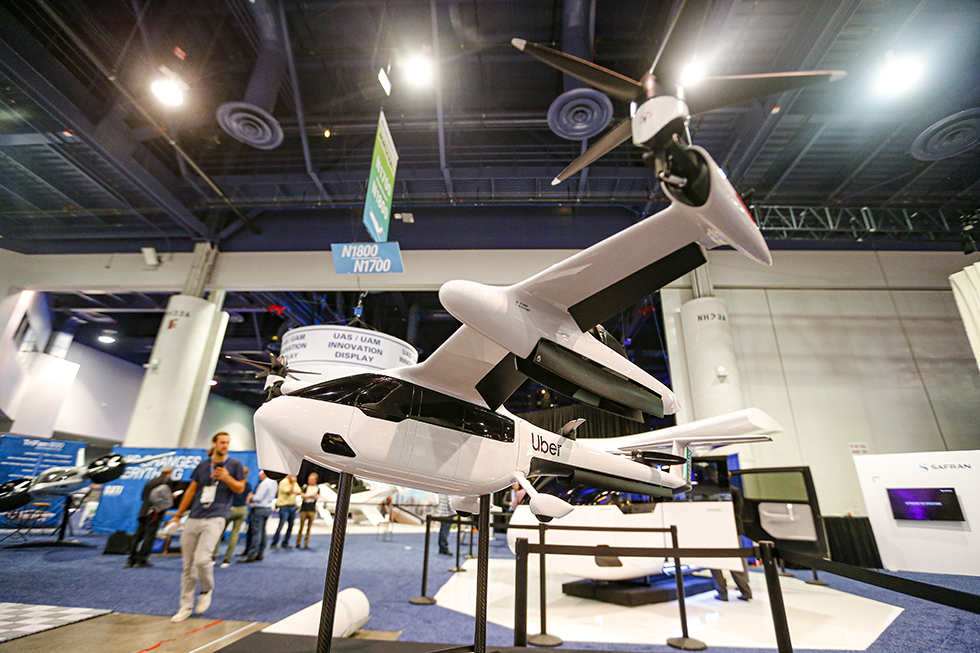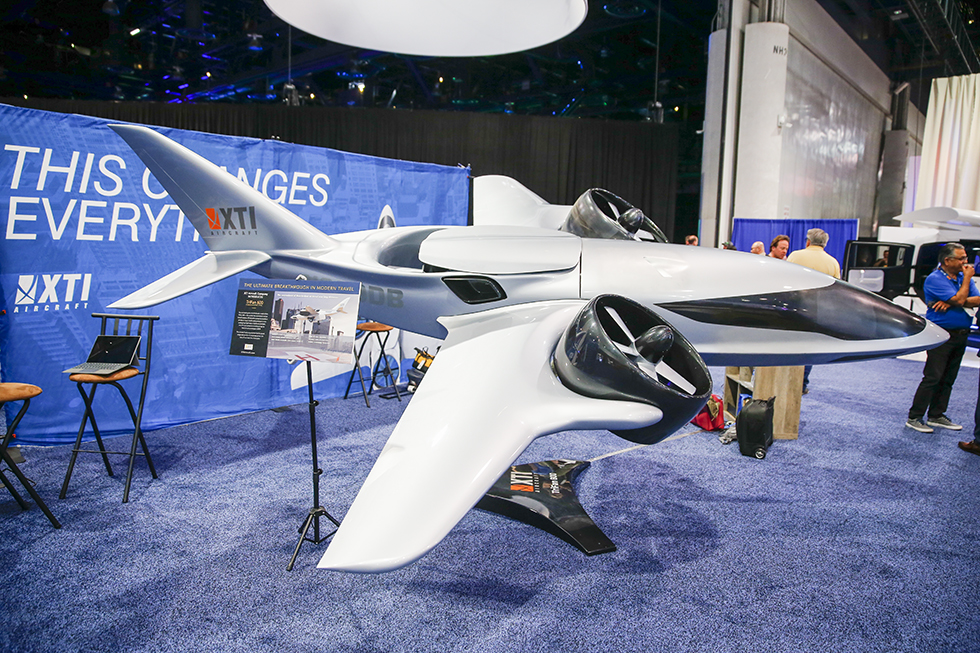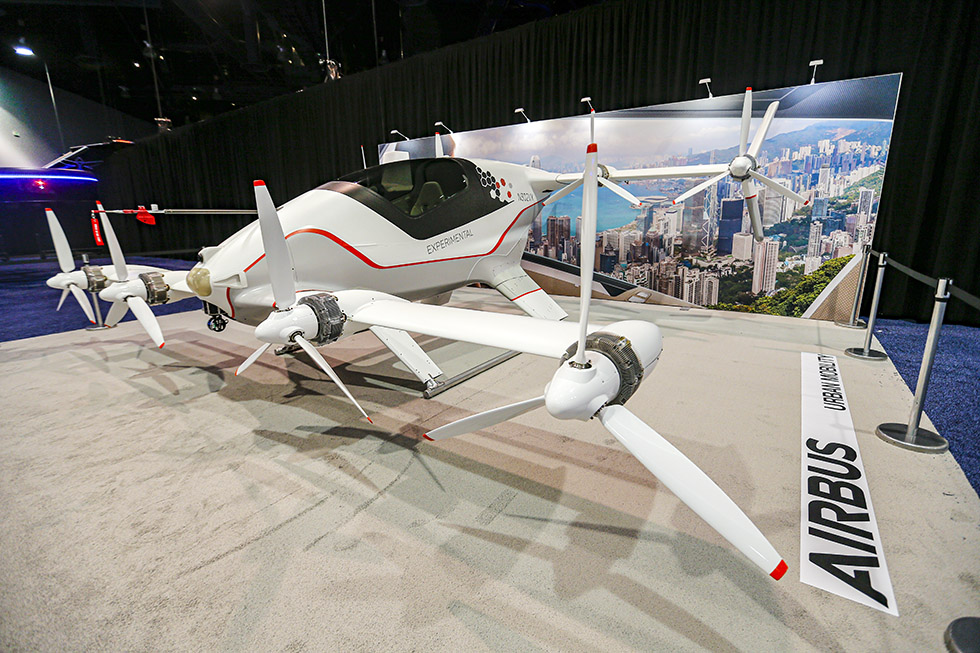The unmanned air taxi industry landed on NBAA, with a host of vendors displaying mock-ups of designs they hope one day will be shuttling passengers throughout major cities.
The unmanned air taxi industry landed on NBAA, with a host of vendors displaying mock-ups of designs they hope one day will be shuttling passengers throughout major cities.
The vendors are showcasing products at the “UAS/UAM Innovation Display” on the exhibition floor – part of a broad focus on unmanned aircraft systems (UAS) and urban air mobility (UAM) at this year’s show.
Over the next two days, experts will discuss the air taxi industry’s promise during panel discussions and keynote speeches.
Companies on hand include Uber Elevate (below), which has partnered with several air vehicle manufacturers to develop electric vertical takeoff and landing (eVTOL) aircraft capable of carrying four or five passengers.

BillyPix
“We are helping to create a whole new transportation opportunity for large metropolitan areas,” says Uber Elevate’s director of strategy Mark Moore.
Uber Elevate has developed a “common reference” of specifications for eVTOL vehicles that it believes will best serve the mission, and it has an aircraft mock-up at the show.
The aircraft must be quieter than the quietest helicopter and have “distributed technology”, meaning multiple electric motors, says Moore. The systems must also be free of “single part criticality”, meaning a single failure will not cause catastrophic problems.
The aircraft should have a 52nm range (96km), 3h endurance (stops included), be able recharge within 7min and have a speed of about 130kt (241km/h), according to Uber Elevate’s website.

XTI Aircraft’s TriFan 600 uses three ducted fans and can lift off vertically
BillyPix
The company anticipates first flight of an aircraft by 2022 and to certify five aircraft by 2023, with initial passenger flights expected to be conducted in Dallas, Los Angeles or Melbourne, Australia.
Safran has partnered with company to develop the cabin of Uber Elevate’s mock-up and is helping develop hybrid-electric technology for Bell’s Nexus air taxi concept. Bell is among about 10 companies designing aircraft to meet Uber Elevate’s specifications
Others include Jaunt Air Mobility, which is displaying its “reduced rotor operating speed aircraft” – a four-passenger, one-pilot eVTOL that combines helicopter and fixed-wing characteristics. The aircraft takes off vertically using a main rotor and then transitions to forward flight, propelled by wing-integrated motors. During forward flight the main rotor’s rotation slows to a near standstill, Jaunt Air Mobility says.

BillyPix
Airbus’s technology incubator division A3 is showcasing Vahana (above), an all-electric, one-passenger VTOL demonstrator with eight motors integrated into tilting wings. Vahana has already completed 115 autonomous flights since its first flight in January 2018, and flight testing will wrap up in November, says A3 communications director Paige Wilson.
Airbus developed Vahana alongside another UAM demonstrator, CityAirbus, which expects to continue flight testing its vehicle until 2020.
Airbus intends to use insights from both projects to develop another autonomous, passenger-carrying eVTOL for certification next decade, says Wilson.
2019NBAA
Read all the latest news and information from the 2019 NBAA show on our dedicated page


























